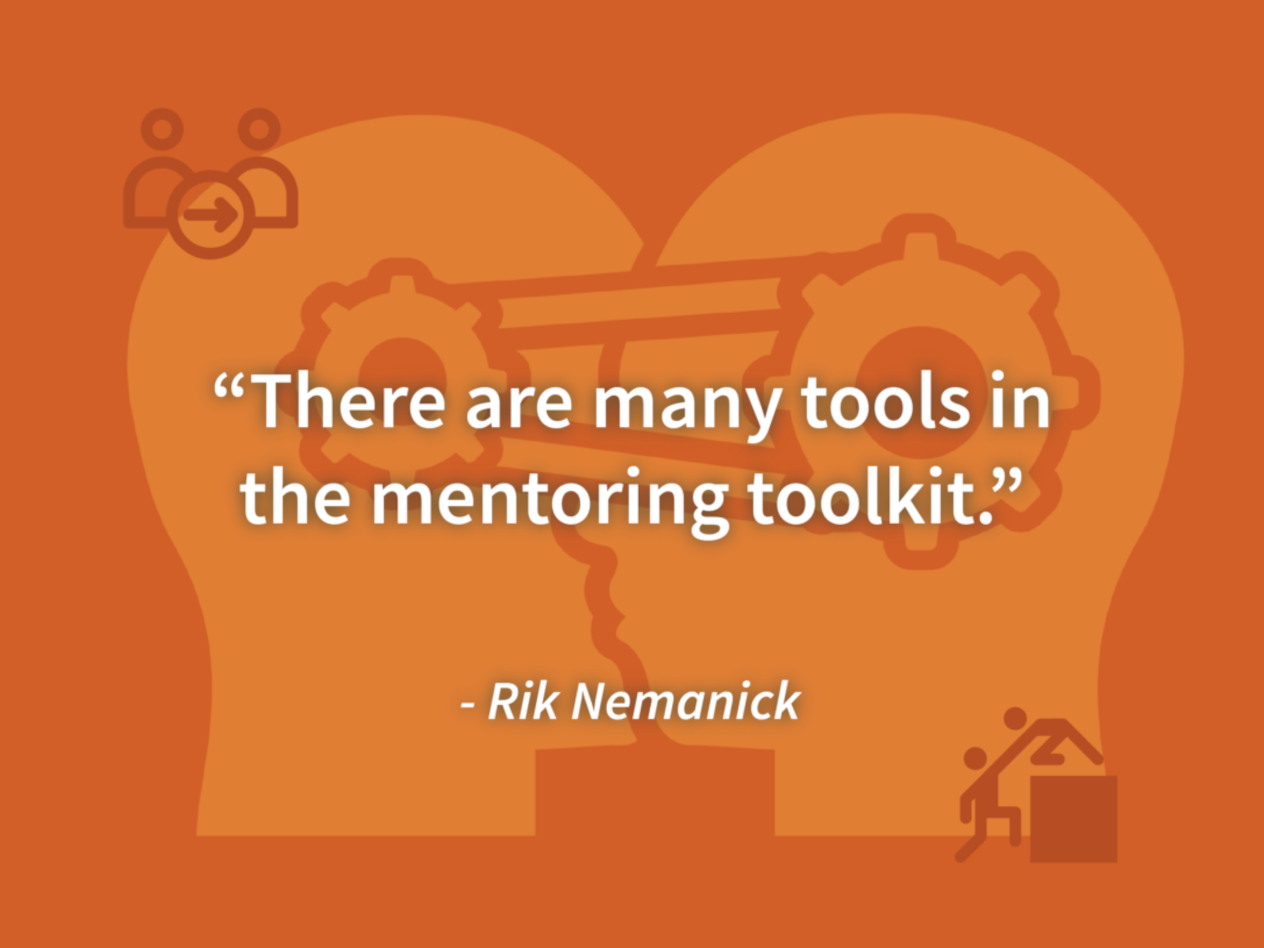What do mentors do? Part 2 in a series
- September 24, 2018
- By Guest Author
- 3 minute read


Rik Nemanick, a Washington University adjunct instructor, wrote this for the Olin Blog. He is the author of The Mentor’s Way: Eight Rules for Bringing Out the Best in Others and is leading an upcoming daylong workshop on mentoring and leader development at Olin. This is the second in a series of Olin Blog posts on mentoring. Check out part one if you missed it.
This blog post continues my discussion about mentoring as a vehicle to extend and enhance learning. The series of posts is based on interviews with six alumni from the School of Engineering and Olin Business School who have been mentors for students at Washington University. In my prior blog post on mentoring, I brought together their ideas to build a definition of what a mentor was. In this post, I explore what mentors do to help bring out the best in others.
One of the reasons mentors are so powerful is because they are adaptable. A good mentor can adapt to the goals and learning styles of the protégé by pulling the right tool out of the mentor’s toolkit (a point I make in the seventh rule of mentoring, Fill the Toolkit). I was reminded of this point in several of the interviews.
For example, Scarlett Lee Foster, EMBA ‘00, said her “most powerful experiences as a mentor came after I retired, working with students at Washington University in the business school. My role was to listen, advise, assist, connect, and support.” But, she added that her own mentor, a vice chairman of her company, “was a sounding board, and a voice of experience and reason in times good and bad.”
Dante Cannarozzi, BSAS ‘01/MSCS ‘03, noted how he flexes his mentoring style based on his protégé’s needs: “For those people in a similar technical background, I’ve discussed technical issues (usual architecture related). For those who are managers or friends, I’ve generally discussed office politics or career growth opportunities. In either case, I’ve often discussed current issues to get their opinion as to my best move strategically.”
As mentoring relationships grow, many mentors take on additional roles with their protégés to have a larger impact. Beyond “active listening and providing guidance to help me perform more effectively,” Sally Roth, EMBA ‘95, said her mentors “also served as advocates. One mentor supported my candidacy for the EMBA program at Washington University.” The roles of advocate and sponsor can be powerful. But those roles depend on building sufficient trust between a mentor and protégé because the relationship represents reputational risk on a mentor’s part.
Of course, most of what I have described so far has been in traditional one-to-one, senior-to-junior mentoring partnerships. Many mentoring theorists suggest we expand our notion of mentoring to include both developmental networks (essentially, having multiple mentors who give you multiple perspectives) as well as peer-to-peer mentoring.
Haroon Taqi, BSCS ’90/MSCS ’95, says he capitalizes on the latter idea by exposing “my team members to learning situations where they can learn from each other’s experiences rather than just have to struggle through it all themselves.”
“Mentorship & Leader Development,” a workshop presented by Olin Business School Executive Education, will be Nov. 6 from 8 a.m. to 4 p.m. Get more details and register. Nemanick is author of The Mentor’s Way.
Media inquiries
For assistance with media inquiries and to find faculty experts, please contact Washington University Marketing & Communications.
Monday–Friday, 8:30 to 5 p.m.
Sara Savat
Senior News Director, Business and Social Sciences
